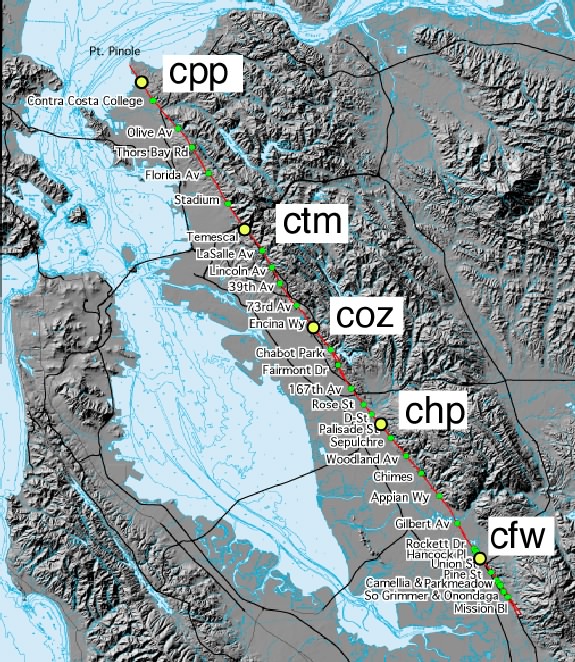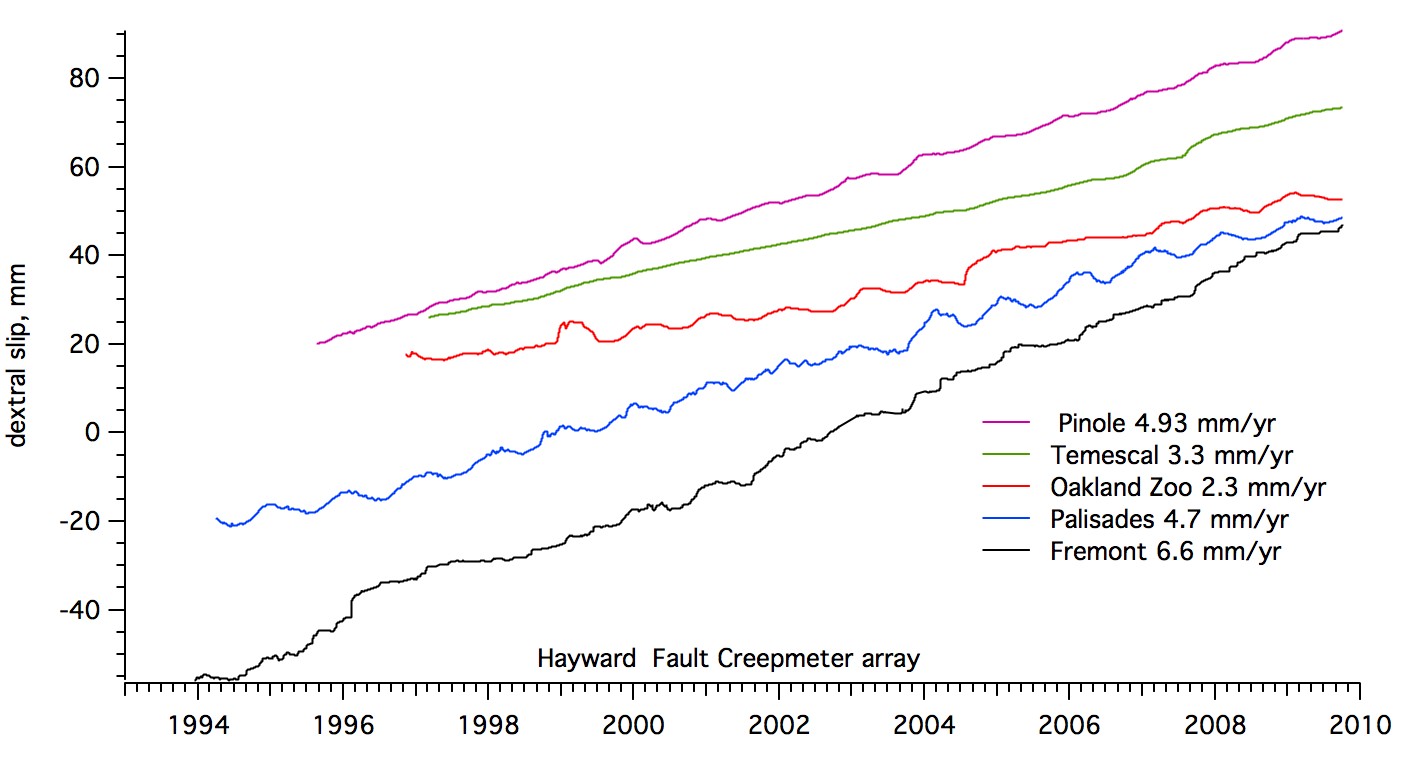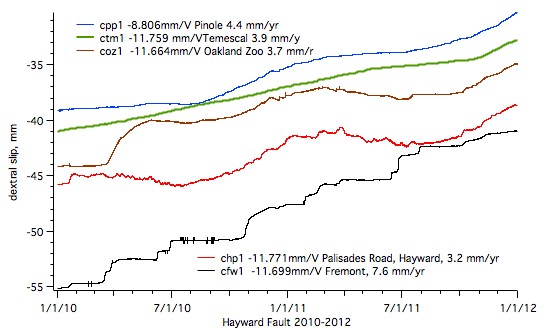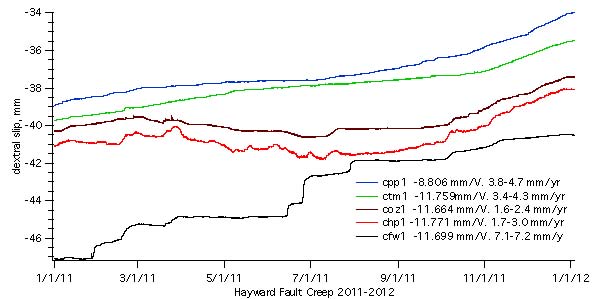Hayward Fault Creep
for creep in southern California click here

Click on one of the five creepmeters to view creep history or to download numerical data. Details.
Cumulative Creep jpg pdf

Creep 2010-2012 jpg pdf data*

Creep 2011-2012 jpg pdf

Creep 2010-2011 jpg pdf

The 4 mm creep event at Oakland Zoo in 2010 is similar in ampliude and duration to one that occurred 2004/5.